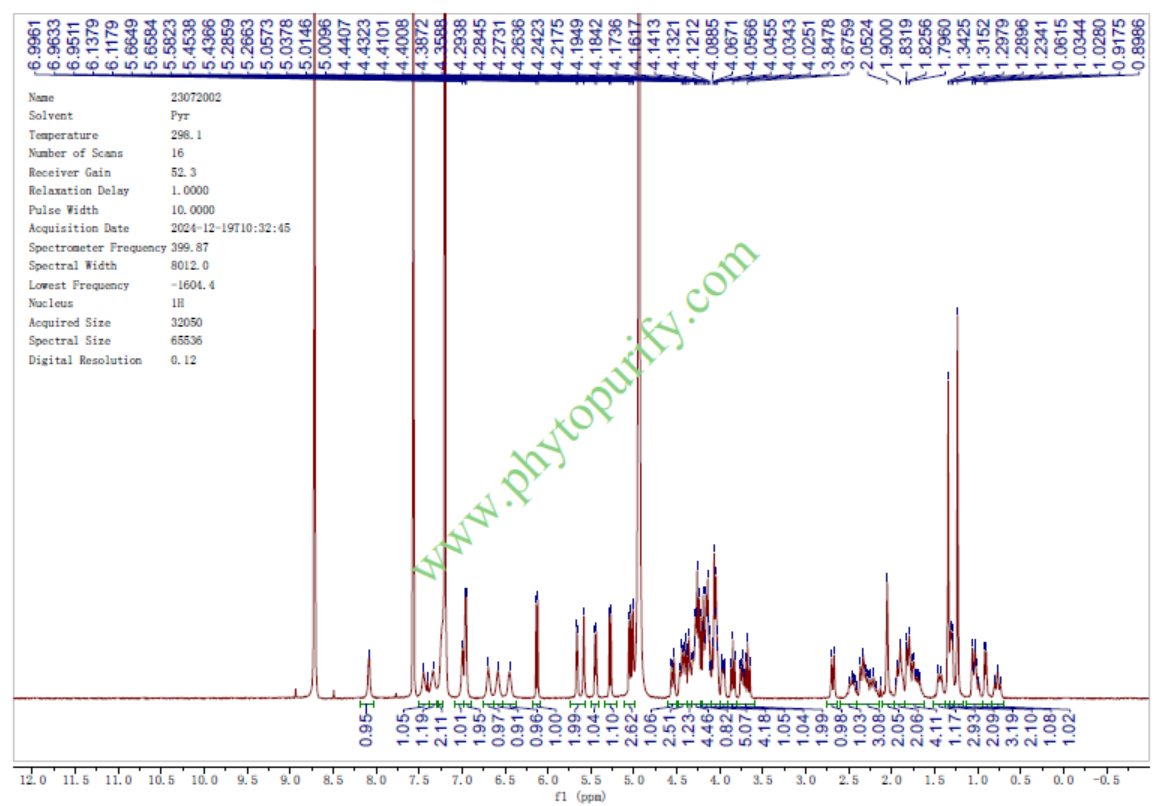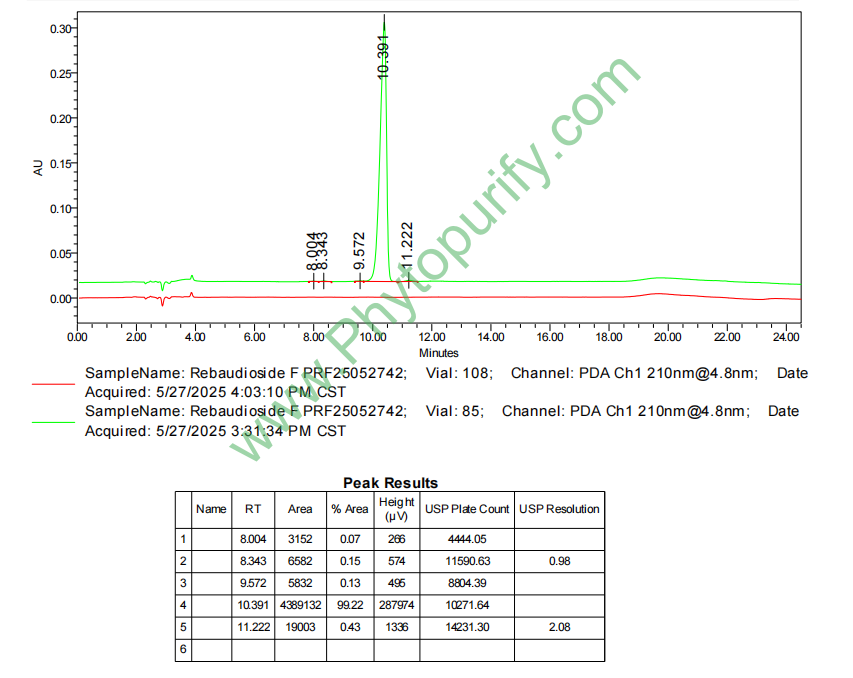
Rebaudioside FCAS No.:438045-89-7
|
||||||||||
 |
|
|
||||||||

| Catalogue No.: | BP2088 |
| Formula: | C43H68O22 |
| Mol Weight: | 936.995 |
Product name: Rebaudioside F
Synonym name:
Catalogue No.: BP2088
Cas No.: 438045-89-7
Formula: C43H68O22
Mol Weight: 936.995
Botanical Source: Stevia rebaudiana (Bertoni) Hemsl.
Physical Description:
Type of Compound: Diterpenoids
Purity: 95%~99%
Analysis Method: HPLC-DAD or/and HPLC-ELSD
Identification Method: Mass, NMR
Packing: Brown vial or HDPE plastic bottle
Storage: Store in a well closed container, protected from air and light. Put into refrigerate or freeze for long term storage.
The product could be supplied from milligrams to grams
Inquire for bulk scale.
For Reference Standard and R&D, Not for Human Use Directly.
Description:
Reference standards.
References:
Phytochemistry. 2002 Feb;59(4):367-70.
Rebaudioside F, a diterpene glycoside from Stevia rebaudiana.
METHODS AND RESULTS:
The sweet diterpenoid glycoside, Rebaudioside F, was isolated from leaves of a high rebaudioside C producing line of Stevia rebaudiana, and its structure was established by chemical and spectral studies.
FEBS Open Bio. 2016 Aug 30;6(9):937-44.
Gene transcription and steviol glycoside accumulation in Stevia rebaudiana under polyethylene glycol-induced drought stress in greenhouse cultivation.
Stevia rebaudiana is a sweet herb of the Astraceae family, which is cultivated for the natural sweeteners it contains. The aim of this study was to assess the effect of drought, simulated by the application of polyethylene glycol (5%, 10%, and 15% w/v), on the content of steviol glycosides (SVglys) and transcription levels of six genes involved in the biosynthesis of these natural sweeteners.
METHODS AND RESULTS:
The transcription levels of ent-kaurene synthase, ent-kaurene oxidase, ent-kaurenoic acid hydroxylase, and three UDP-dependent glycosyltransferases, UGT85C2,UGT74G1 and UGT76G1 were downregulated under polyethylene glycol treatment. Polyethylene glycol treatment significantly decreased the amount of stevioside, rebaudioside A, rebaudioside B, rebaudioside C andRebaudioside F, steviolbioside, dulcoside A, rubusoside, and total SVglys. These results strongly suggest a close relationship of SVglys content with the transcription of genes involved in the SVglys biosynthesis pathway. Comparing the observations of the present study with other reports provided the knowledge that the Stevia response to drought stress can be influenced by different environmental and experimental factors, in addition to intensity of drought stress.
CONCLUSIONS:
In conclusion, these results strongly suggest that polyethylene glycol-induced drought stress has a negative effect on the content of SVglys and transcription of SVglys biosynthetic genes and that this should be investigated further. We recommend that sufficient irrigation of Stevia is required to obtain a high content of SVglys.
HNMR of Rebaudioside F

HPLC of Rebaudioside F
